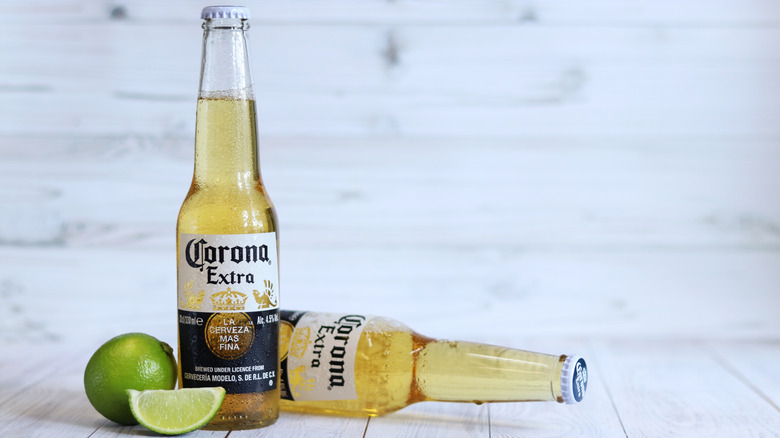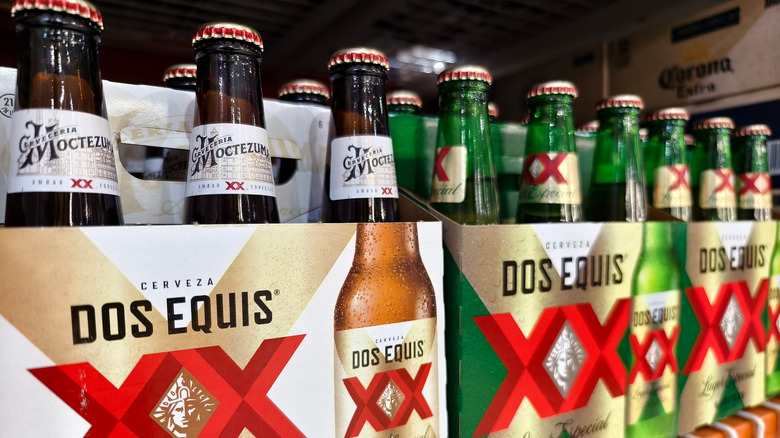What Makes Mexican Beer Different From Other Types?
Americans love their own beer, but when they're in the mood for something international, they usually go for Mexican products. Our southern neighbor accounts for over 80% of American beer imports, beating out other popular beer countries like Germany and Belgium by an impressively wide margin. What's so special about Mexican beers? To better understand this, we turned to Stephen Alexander, director of operations at Tall City Brewing in Midland, Texas and a member of the Texas Craft Brewers Guild.
According to Alexander, "Mexican beer is rooted in European lager traditions (from Austrian and German immigrants in the 19th century) but adapted to local ingredients and climate. As a result, many are light, crisp, and refreshing; perfect for hot weather." This is part of why the country's beers are often served with a lime wedge.
Additionally, Mexican lagers use corn, whereas many American beers use rice. "Corn gives a slightly sweeter, fuller flavor while rice produces a drier, lighter body. That subtle difference sets Mexican lagers apart, especially when compared to mass-produced American domestics," Alexander explains. This is why you'll never get an American beer that tastes quite like its Mexican counterpart. Neither is necessarily better than the other; they simply provide different tastes for different occasions.
The types of Mexican lagers
Lagers are the most widely-consumed beer in the world, probably because they tend to be lighter, more refreshing, and have a lower alcohol content than other styles like IPAs (Indian pale ales) or dark stout beers. This makes them easy to drink and more approachable to a wide variety of people. But there is nuance even within this type of beer. Alexander points out clara (pale) lagers and oscura (dark) lagers as the two main styles of Mexican lager.
The first is golden, crisp, and light. "They're similar to American light lagers but often with more body and subtle corn sweetness," states Alexander. Think of beers like Corona and Sol, which go down smoothly and are perfect for hotter climates. Oscura lagers are an amber color and have toasted malt or caramel notes. This category was the natural evolution of Vienna and Munich lagers. When German and Austrian immigrants came to Mexico in the 19th century, they started adding corn to this type of beer, making it just a little bit sweeter. Some of the best Mexican beers, like Negra Modelo, Victoria, and Dos Equis Amber fall into this style.
No matter which beer you choose, Alexander points out: "In general, craft lagers (Mexican or not) tend to emphasize balance, body, and fresh ingredients, whereas domestic American lagers (Bud, Coors, Miller) prioritize lightness, drinkability, and mass consistency." The more you know, the better you'll drink.

